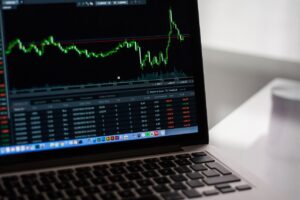Saudi Arabia has undergone significant economic and social changes in recent years, driven by an ambitious vision that seeks to reshape the country for a post-oil future. At the heart of this transformation is Vision 2030, the Saudi government’s framework for diversifying the economy, reducing dependency on oil, and enhancing public service sectors such as health, education, infrastructure, and tourism. This Economic and Social Revolution in Saudi Arabia is not only changing the internal dynamics of Saudi Arabia but also altering its role in the global economy.
1. Saudi Arabia’s Social Revolution: Changing Cultural Norms
Historically known for its conservative cultural and social norms, Saudi Arabia is witnessing groundbreaking social reforms that are reshaping the fabric of its society. The Crown Prince, Mohammed bin Salman (MBS), has spearheaded this change through numerous initiatives to modernize the country while still retaining its Islamic heritage.
Key Social Changes:
- Women’s Rights: One of the most visible changes has been in women’s rights. In 2018, Saudi women were granted the right to drive, a significant milestone. This was followed by reforms allowing women to travel without a male guardian’s permission, apply for passports, and register for the national ID independently.
- Cultural Shifts: Public entertainment has flourished. Cinemas, concerts, and sporting events were reintroduced, which were once banned under strict religious regulations. Major international artists now perform in Saudi Arabia, signaling a relaxation of past cultural taboos.
- Tourism and Global Connectivity: Before 2020, Saudi Arabia was mostly closed to international tourism, limiting visitors to businesspeople or religious pilgrims. Today, with new visa policies, Saudi Arabia is opening its doors to global tourists, aiming to attract 100 million tourists by 2030. These developments are supported by improvements in infrastructure, including the construction of luxury resorts and futuristic cities like Neom.
Social Implications:
The changes in social policies are instrumental in empowering Saudi citizens, especially women and the younger generation. With a median age of around 32 years, the majority of Saudi Arabia’s population is young, and these reforms are geared towards modernizing the country in ways that appeal to its youth. However, the rapid pace of social change is not without challenges. Conservative elements in society resist some of the more progressive reforms, creating a cultural tension between traditionalists and modernists.
2. Economic Development: Saudi Arabia’s Path to Diversification
Saudi Arabia’s economy has traditionally been centered around oil. As the largest exporter of crude oil globally, the kingdom has enjoyed immense wealth. However, this reliance on oil exports also made it vulnerable to fluctuations in global oil prices and the growing demand for renewable energy. Vision 2030 is a strategic response to these vulnerabilities.
Key Economic Sectors:
- Diversification Efforts: Vision 2030 seeks to diversify the Saudi economy by developing non-oil sectors such as tourism, entertainment, renewable energy, finance, and technology. For instance, the Public Investment Fund (PIF) is playing a pivotal role in investing in new sectors, including the establishment of Neom, a $500 billion futuristic city powered by renewable energy.
- Tourism: The country aims to transform into a major tourism hub, as seen in its ambitious plan to increase the number of international visitors to 100 million annually by 2030. This shift includes the development of tourist-friendly cities, luxury resorts along the Red Sea, and hosting major global events.
- Energy Transition: While Saudi Arabia remains a leading oil producer, the country is also positioning itself as a global leader in renewable energy. Projects such as the construction of solar and wind farms and the world’s largest green hydrogen facility illustrate Saudi Arabia’s commitment to becoming a sustainable energy provider. The goal is to generate 50% of its electricity from renewable sources by 2030.
- Foreign Investment and Special Economic Zones: Saudi Arabia has introduced four new Special Economic Zones (SEZs) to attract foreign businesses with incentives such as lower corporate tax rates, exemptions from VAT, and looser labor regulations. This move aims to turn the kingdom into a regional business hub, competing with other Gulf nations such as the UAE and Qatar.
3. Saudi Arabia and the Global Economy
The kingdom’s economic policies have far-reaching implications for the global economy. As the largest economy in the Middle East and a significant player in the global energy market, Saudi Arabia’s economic health influences global markets.
Global Economic Relationships:
- Oil Production and OPEC: As a leading member of the Organization of the Petroleum Exporting Countries (OPEC), Saudi Arabia wields significant influence over global oil prices. The kingdom’s oil policies, including production cuts or increases, can cause ripple effects across global markets.
- Foreign Investment: Saudi Arabia’s new SEZs and economic liberalization are designed to attract more foreign direct investment (FDI). In 2022, the country saw a record inflow of $19.3 billion in FDI, reflecting growing international confidence in its economic reforms.
- Regional Power: Saudi Arabia is also positioning itself as a stabilizing force in the region. The kingdom has mediated peace talks in conflicts such as the Yemen civil war and supported regional economies through investment initiatives.
- Strategic Partnerships: Saudi Arabia is forging closer ties with global powers such as China and Russia while maintaining traditional partnerships with the United States and the United Kingdom. These partnerships are driven by mutual economic interests, particularly in energy, technology, and defense.
Saudi Arabia’s Role in Global Supply Chains:
The kingdom’s strategic location between Europe, Asia, and Africa has made it a critical logistics and transportation hub. The development of its ports and airports, along with investment in high-speed rail and highways, is positioning Saudi Arabia as a key player in global supply chains. Riyadh Air, a new airline set to launch in 2025, aims to make Saudi Arabia a major air transport hub, connecting Europe and Asia.
4. Challenges and Opportunities
Despite its progress, Saudi Arabia faces several challenges as it pursues its economic and social revolution.
Economic Challenges:
- Youth Unemployment: While the reforms have created new job opportunities, youth unemployment remains a concern, especially among educated Saudis. The government is pushing for increased private sector involvement to absorb the growing labor force.
- Inflation and Cost of Living: As Saudi Arabia diversifies its economy, the removal of subsidies on essential goods such as fuel and electricity has led to inflation, which can strain the lower-income population. This has prompted the government to introduce social welfare programs to mitigate the impact.
- Global Energy Transition: Saudi Arabia’s reliance on oil means that the global shift towards renewable energy poses risks to its economy. However, the kingdom’s proactive investments in green energy and hydrogen are positioning it to remain a dominant energy player even in a low-carbon future.
Social Challenges:
- Balancing Tradition and Modernity: The rapid pace of social change is met with resistance from conservative factions within Saudi society. Managing this tension will be crucial to ensuring long-term social stability.
- Gender Equality: While there has been progress in women’s rights, full gender equality remains a distant goal. Women still face legal and social barriers that hinder their full participation in the workforce and public life.
Opportunities:
- Tech Innovation: The push for economic diversification is creating opportunities in the technology and digital sectors. Saudi Arabia is investing heavily in startups, fintech, and artificial intelligence, with the goal of becoming a regional tech hub.
- Tourism Boom: The global tourism market represents a major growth area for Saudi Arabia. With a rich cultural heritage and significant investments in tourism infrastructure, the country is well-positioned to become a top global destination.
5. Conclusion
Saudi Arabia’s economic and social revolution represents one of the most ambitious transformations in the modern world. Under Vision 2030, the kingdom is moving away from an oil-dependent economy towards a more diversified, innovative, and socially progressive society. The changes being implemented are not only reshaping the internal structure of Saudi Arabia but also altering its position in the global economy.
The success of these reforms will depend on how well the government manages the tensions between tradition and modernity, navigates global economic shifts, and ensures that the benefits of this transformation are distributed across all segments of society. If successful, Saudi Arabia could emerge as a global leader in energy, tourism, and technology, with a thriving and modern economy.
Key Metrics of Saudi Arabia’s Economic and Social Transformation in 2024
| Metric | Value |
|---|---|
| Population | 35 million |
| GDP Growth (2024 forecast) | 6.5% |
| Unemployment Rate | 6.6% |
| Female Workforce Participation | 35% |
| FDI Inflow (2023) | $19.3 billion |
| Oil Revenue Contribution to GDP | 50% |
| Renewable Energy Target (2030) | 50% of electricity |
| Projected Tourism Numbers (2030) | 100 million |
| Number of SEZs | 4 |
| New Special Economic Zones | 4 |



